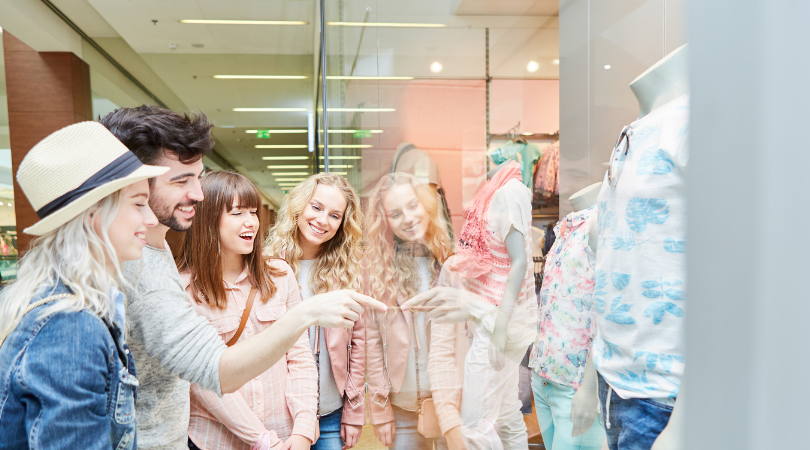
Imagine a crowd of 10- to 25-year-old consumers at one of your stores and a crowd of 25- to 39-year-olds at another. How would each store differ in its merchandise, in-aisle communications and payment options? This is something about which retailers should be thinking.
The ways members of Gen Z approach spending are different than that of their predecessors. Given they spent their formative years watching the world cope with major recessions, a global pandemic and the complete saturation of digital commerce, it’s no surprise that Gen Z may have a different perspective than Millennials. Born between 1997 and 2012, those smack in the middle of Gen Z are now approaching 18, and history suggests they are more money-conscious than their parents (Gen X) and other older cohorts.
Case in point: More than two-thirds of this group, 64%, have already started researching and seeking advice about financial planning, while in 2021, 62% of Millennials, as much as 15 years older, have.
Gen Z Will Likely Not Repeat History. Retailers Must Reinvent
Having seen how easily money can slip away, older Gen Z consumers are more prone not only to seek out financial advice, but to put off some purchases all together. But this latter tendency also is the result of other, deeper-running issues. Following are five contributing factors that can prepare retailers to meet this generation’s needs, responsibly.
The (lack of) presence of credit cards in their wallets. The oldest members of Gen Z turned 12 the same year that the Credit Card Accountability Responsibility and Disclosure Act of 2009 introduced stricter eligibility rules, such as proof of income or requiring a cosigner. The result: Just more than half of eligible Gen Zers hold a credit card (55%) compared with 66% of millennials. The limitations on card enrollment have made it difficult for some of the oldest Gen Z consumers to build credit. Solution: The “buy now, pay later” installment plan, such as that offered by Walmart, can help consumers build credit. And entry-level cards can promote bonus reward points on the products this group aspires to buy. For example, the Bilt Rewards program, which partners with Mastercard, issues points to members for paying their rent. They can redeem those points for travel, a home down payment or goods from the Bilt Collection, a members-only online store of art, home décor and apparel.
Gen Z has savings to spare. Maybe it’s due to the lack of credit-required debt, but members of Gen Z have been saving and investing not for a rainy day, but for a complete financial drought. The research firm Gen Z Planet in late 2021 estimated this generation was holding on to $360 billion. Further, despite their young age, 38% of Gen Zers have opened online investment accounts. Solution: Retailers can research and replicate some of the attractive features in mobile investment apps which purport to make investing easy and fun. Because this group of consumers is more likely to need convincing that a product is worth it, in-app messaging should underscore the functionality, quality and overall value of products and categories – including references to features such as durability and how the brand addresses sustainability concerns.
Speaking of value – it beats experience. Gen Z matured in the context of the 2001 recession, the Great Recession of 2008-09, and the pandemic-triggered recession of 2020. As a result, when they do spend, they tend to seek goods that deliver the maximum amount of value. This is a stark difference from Millennials who prioritize the retail experience and will pay more for it. Solution: As specified in the previous point, retailers that want to capture Gen Z dollars must promote product quality, longevity, volume and other value-defining factors – particularly in all digital listings. This generation is more prone to go online first when researching goods, and they often complete their purchases there. Further, the kids growing up behind Gen Z, Gen Alpha, also tend to shop online first, thanks to two years of pandemic-enforced virtual living. So be prepared.
They value old-school fashion, even online. Assuming that Gen Z employees report to an outside workplace, they are deciding their own dress codes, much as they are deciding their own work hours. Some trends indicate a preference for preppy chic – a throwback to Oxford shirts, loafers and tweed jackets. This preference could be encouraged by the generation’s embrace of budget- and earth-friendly thrifting (even among those who are monied). Solution: The thrifting industry, valued at $28 billion in 2021, is predicted to outpace fast fashion by 2029, when the youngest of Gen Z will be taking their first jobs. More retailers, including Lululemon, Levi’s and Madewell sell used clothes, and Macy’s has teamed with ThredUp. If not set up to sell literal secondhand clothing, retailers can adopt the secondhand aesthetic, with fashions and displays that reflect retro and sustainability.
It Will Come To A Head In, Oh, 8 Years
The youngest of Gen Z are turning 10 in 2022. By 2030, they will be 18 and entering the workforce or college (or both).
Also, by then, the oldest of Gen Z will have already begun producing the next generation of consumers. The financial lessons they teach that next generation will be based on their past experiences, so how retailers and brands shape those retail experiences today will influence this (and future) generation’s expectations tomorrow.
This article originally appeared in Forbes. Follow me on Facebook and Twitter for more on retail, loyalty and the customer experience.



